 [Image: The finished "math playground" in Uganda, by Project H Design].
[Image: The finished "math playground" in Uganda, by Project H Design].Project H Design recently completed the installation of a "math playground," or Learning Landscape, at the Kutamba School for orphans of AIDS in rural Uganda.
Part outdoor classroom, part spatially immersive lesson in arithmetic, the project gives students a place to study in at least two senses of the phrase. On the one hand, it's simply a forum for learning; on the other, it is literally a place to study: the space itself, if I've understood this correctly, serves as a model for play-based education.
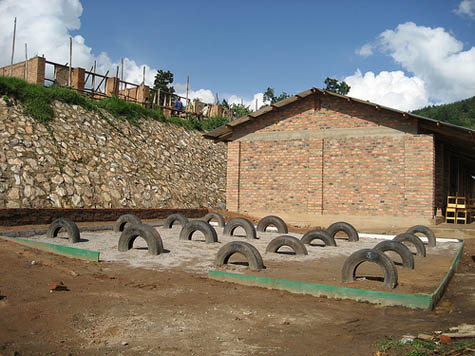
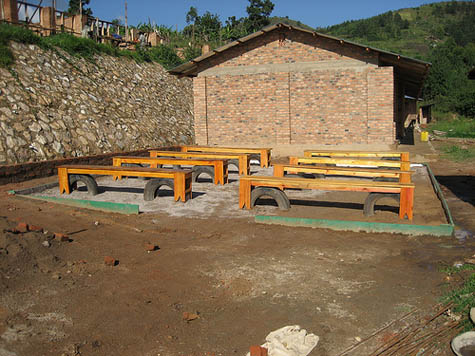 [Images: The "math playground," by Project H Design].
[Images: The "math playground," by Project H Design].That is, within the numbered arrangement of tires and benches is a spatial pedagogy: using the landscape itself, any number of spatialized games, such as "Around The World" and "Match Me," can be used to teach elementary mathematics.
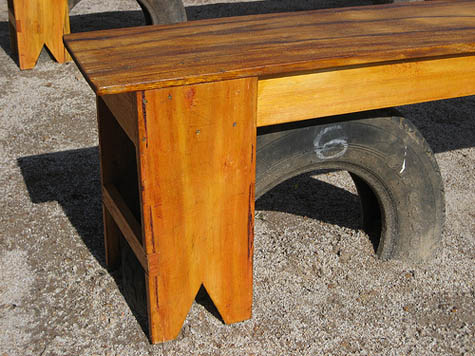 [Images: One the finished benches, via Project H Design].
[Images: One the finished benches, via Project H Design].The didactic landscape was, at one point, simply a kind of mathematical test-landscape in a U.S. gymnasium before being tried out by the students on site in Uganda, before reaching its final installation.


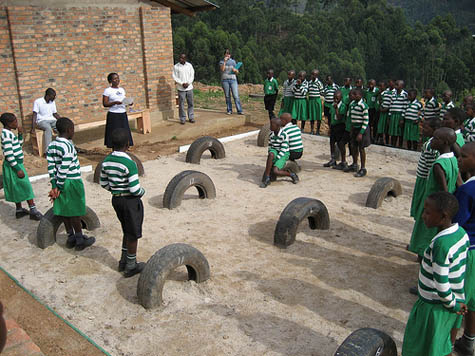 [Images: Testing out the landscape, via Project H Design].
[Images: Testing out the landscape, via Project H Design].Check out the whole research, design, and installation process through their Flickr sets.
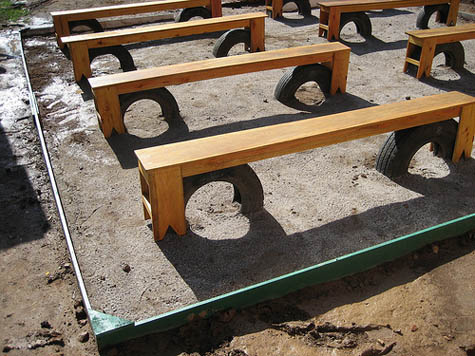 [Images: Via Project H Design].
[Images: Via Project H Design].I absolutely love the idea, though, that it might be possible to derive mathematical lessons from the built environment surrounding us. That, somewhere in the walls, roads, and buildings we find ourselves alive within, are equations waiting to be deduced, geometries to be studied, forces that we can isolate, graph, and understand. Whether through games or lectures, it is the spatial world itself that we study.
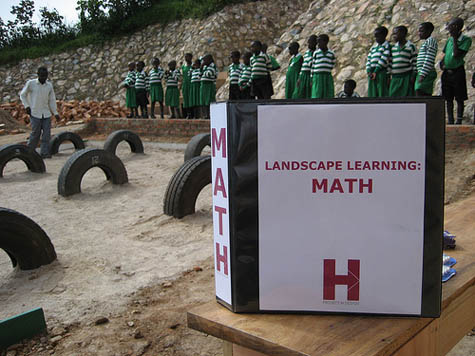 [Images: A handbook to spatial learning, via Project H Design].
[Images: A handbook to spatial learning, via Project H Design].Of course, this is one of the most basic things you do when you first study engineering: you look at a bridge, tower, or other structure and you try to figure out how it stands or works. Or you stand behind Notre-Dame in Paris, staring at those stone cobwebs of intersecting buttressed supports, and you try to understand how it is that cathedrals gravitationally function.
But how incredible would it be to realize that, say, your entire city had actually been organized by urban planners two hundred years ago as a kind of inhabitable lesson in mathematics or logical reasoning, like something from the early theories of Friedrich Froebel?
Who?
In an unbelievably interesting exhibition held two years ago in Pasadena, the Institute For Figuring explored the educational system of a now relatively under-known man named Friedrich Froebel and his influence on what we now call kindergarten. To quote from their online exhibition at length:
- Most of us today experienced kindergarten as a loose assortment of playful activities – a kind of preparatory ground for school proper. But in its original incarnation kindergarten was a formalized system that drew its inspiration from the science of crystallography. During its early years in the nineteenth century, kindergarten was based around a system of abstract exercises that aimed to instill in young children an understanding of the mathematically generated logic underlying the ebb and flow of creation. This revolutionary system was developed by the German scientist Friedrich Froebel whose vision of childhood education changed the course of our culture laying the grounds for modernist art, architecture and design. Le Corbusier, Frank Lloyd Wright and Buckminster Fuller are all documented attendees of kindergarten. Other “form-givers” of the modern era – including Piet Mondrian, Wassily Kandinsky and Georges Braque – were educated in an environment permeated with Frobelian influence.
 [Images: A Froebelian garden for kids – that is, a kindergarten – brings spatial education to Los Angeles in this archival image, courtesy of the The Institute For Figuring].
[Images: A Froebelian garden for kids – that is, a kindergarten – brings spatial education to Los Angeles in this archival image, courtesy of the The Institute For Figuring].Your every commute to work becomes part of a spatial curriculum, carving out education through space.
One of the questions here would be: could you reverse-engineer mathematical lessons from the environment that already surrounds you? Or do you need to purpose-build pedagogic spatiality?
In any case, read more about Froebelian education through the fascinating Institute for Figuring, and stop by Project H Design to find out how you can support the philanthropic construction of future Learning Landscapes elsewhere.
No comments:
Post a Comment